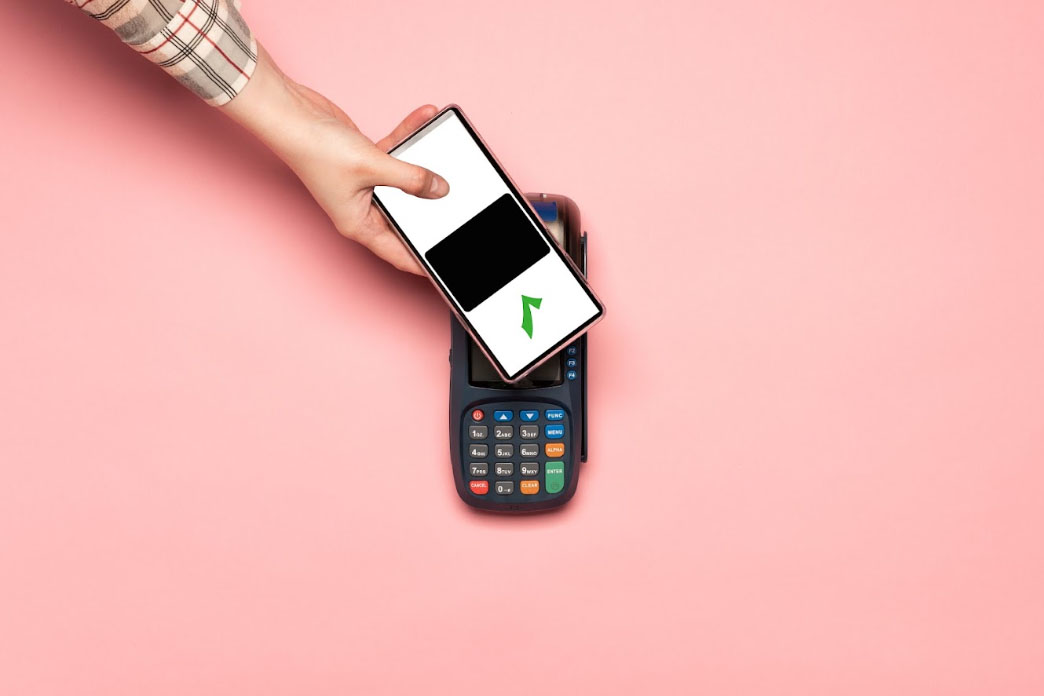Starting a business can be a daunting task—more so if you want to do it without any money. But just because you have little to no starting capital doesn’t mean you have nothing going for you. Many of the most crucial steps in starting a business have little to do with how much money you have at the beginning. Our guide shows you how to start a business with no money—and you can take the first step today.
Key takeaways:
- The skills and experience you already have can form the core of a small service-based business.
- Find early customers through your network or online.
- Test your ideas before committing too many resources.
- Set up various ways to receive payment.
- Be flexible and adjust your business development as you go.
Step 1: Assess Your Available Skills & Assets
Even when you start a business with no money, you’re never starting without any assets. All of the experience, skills, knowledge, interests, and equipment that you’ve accumulated over the years are assets that can make you interesting and valuable to potential customers. You don’t necessarily have to be a top-level expert to get started; you just need to be more skilled or experienced than your potential customers.
You don’t have to start with just what you already know, either. You can always use free online learning resources, libraries, and even mentoring from friends and acquaintances to add to your knowledge base—and make what you offer more useful to people.
Here are some guide questions you can use to assess your own skills and assets, and start thinking about how these may be useful to other people:
- What skills, experiences, and knowledge have you picked up over the years? Don’t limit yourself; these can be related to hobbies and personal interests, as well as professional skills and experience.
- How can you make yourself stand out from the competition? What have you learned, seen, or experienced over time that not many other people have? Or, can you offer familiar things in a new way?
- How could you teach or communicate your skills and knowledge to someone else? Or, how could you use them to make someone else’s life easier, more convenient, or more enjoyable?
- What else can you learn to add to your existing knowledge? What resources are easily available to you?

The first step is to take stock of all the skills, experience, knowledge, and tools you’ve gathered over the years. These can all serve as things you can offer to potential customers.
Step 2: Develop a Business Idea
Once you have a good grasp of your own skills, experience, and other assets, plus an idea of how to reach your customers, it’s time to write down your business idea.
If you want to, you can create a full business plan at this stage. This will involve deciding on a business name and setting contact information; writing a company overview, list of offerings, marketing and sales strategies, and financial information; and working on tasks such as permits, licenses, and agreements. This is a lot of information to lay out, but you can choose to create a simpler one-page version for now.
However, you don’t necessarily have to create a full-blown business plan or proposal, unless you’re planning to pitch to a financier in the near future. You can opt to simply have a description of what your product or service is, how you plan to reach your customers, provide what they need, and receive payment. Writing these down will keep you focused whenever things become uncertain, and can also serve as a template for a more formal business plan in the future.

Your written business idea doesn’t need to be incredibly detailed, but it should contain a few vital elements.
Here is the information you need to include in your written business idea:
- Clearly defined target market. Be as specific as possible when describing your intended customers. Think about their age range, income level, location, spending habits, priorities, pain points, and wishes. The purpose of this specificity isn’t to limit your business model but rather to help you design or fine-tune your products and services, and improve your marketing. You can always revise the image of your ideal customers later on if the business goes in an unexpected direction. Creating a customer persona will also help with these efforts.
- Product or service descriptions. Write clear descriptions of your services and products. As the old saying goes: your products and services don’t have to be suitable for everyone, but anyone should be able to understand what they are. Good descriptions will pique potential customers’ interest, improve brand awareness, and pave the way towards engagement and buyer loyalty.
- Marketing and advertising plans: While the tips in Step 2 above will help you find your first few customers, your business will need a more robust marketing and advertising plan as your customer base grows. Even with a small budget, you can get your business listed in online business directories, advertise on Facebook and other social media platforms, or create a dedicated website. We’ve compiled a list of local advertising ideas to help you get started.
- Budget: You might wonder why it’s necessary to include a section on budgeting in a plan for starting a business with no money. Preparing for the possibility of failure is always a good idea—but what if you succeed? What if your first few customers are happy, you get referred to more buyers, and your business really starts to take off? In that case, you’ll need to figure out the best way to allocate and spend your growing profits (hint: reinvest them into the business). As your operations grow in scale, you may find yourself renting or buying office space, purchasing new equipment, and even hiring an employee or two. You’ll need a written budget to account for all of these.
If you’d like more specific guidance, here are some ideas for starting a business with no money:
- Childcare
- Pet-sitting
- House cleaning
- Gardening/Lawn care
- Tutoring
- Digital marketing
- Content writing and editing
- Bicycle repair/maintenance
- Fitness training/yoga
- Digital or manual visual arts
- Homemade meals
- Computer or household repair
For even more ideas and inspiration, plus insights on earning potential, read through our business idea guides:
- Business Ideas for Beginners
- Home-based Business Ideas
- Unusual Business Ideas for Entrepreneurs
Step 3: Learn Where Your Customers Are & How to Reach Them
If you don’t have an idea of where potential customers congregate, or if you can’t reach them to advertise your business, then nothing else matters—your new business will grind to a halt before it even gets started.
Here are some avenues you can use to find your first few customers without breaking the bank:
- Explore social media as well as online forums and message boards in your area. This will not only give you some real-world insights about the concerns and problems that people have (for which you may be able to provide solutions) but also give you opportunities to engage with these people and find buyers as well as potential business partners and financers in your town or city.
- Leverage your existing networks. Even if it becomes difficult to think of anyone you know who might want what you’re offering, you can always search further out by networking through friends, relatives, and previous or current business contacts. Someone you know is bound to know someone else who needs gardening done, or something in their house cleaned or repaired, or their kids and pets taken care of for a few days.
- Embrace cold calling and cold emailing. While cold calling and emailing might seem like a random strategy (in addition to being pretty nerve-wracking for many people), it can be a useful tool for gaining your first few customers. You may end up connecting with new contacts who are interested in trying out your services or partnering up with you; and even if you don’t, you’ll get some valuable practice in reaching out to strangers and marketing yourself.

When looking for your first few customers, don’t be afraid to email or even get on the phone with distant acquaintances or strangers. At this stage, you have nothing to lose and everything to gain.
Once you’ve gained your first few buyers and completed a few sales, things can start to compound: satisfied customers will recommend you to their own friends and contacts, your own network will expand, and you’ll gain more potential customers.
Step 4: Perform Low-cost Validation
A common pitfall for new entrepreneurs is that they will come up with a business idea, pour a ton of time, effort, and money into setting everything up before launch, and then pray that customers will come and buy. More often than not, the customers do not come (or not enough of them do), and the business owner is eventually forced to close shop, with a crushed spirit and possibly even some debt to pay off. We don’t want this to happen to you.
Avoid this pitfall by validating your business idea early on. This just means performing some test runs to make sure that people do actually want what you’re offering, before you make a really big investment of resources into the venture.
If you’re starting a service business, offer free or reduced-cost trial services for your first several customers. Afterward, ask what could be done better, and whether the customer would pay for your service again in the future or refer you to others.

Offer free or cheap services to your first few customers to gauge their interest. The goal isn’t to make an immediate profit but to check if people want what you’re selling.
If you’re setting up a business that sells physical products, you can use pre-orders to validate your idea. Show potential buyers a strong product description and images, and then let them know that if five, 10, or 50 of them place orders and pay early, you’ll begin the manufacturing and delivery process. The pre-ordering validation method has two benefits: You’ll be able to gauge how popular your product will be among customers, and you’ll avoid running up any manufacturing and delivery costs until you have buyers’ money in your pocket.
Step 5: Handle Business Registration & Insurance
Business registration and insurance are important steps, but don’t worry about them too early on if you’re starting a business with no money. It’s more important to first check whether people actually want the products and services you’ll be offering.
The exact process of business registration will vary depending on the state you’re living and operating in. In general, though, you’ll need to come up with a business name and choose a legal entity, open a business bank account, obtain any necessary permits and licenses, and secure your intellectual property (if applicable). We’ve put together a complete guide and checklist for how to register your business.

Business registration and insurance are important steps, but first, make sure that enough people actually want to buy what you’re selling.
As for business insurance, this is a good way to protect your business and any profits you’ll be making. Many insurance companies are happy to work with small businesses; we’ve put together a list of the best ones. When choosing the best insurance company, consider the exact type of coverage you need, compare different providers, look for discounts, and apply best practices to minimize risk in your business (thus keeping your premiums low). These points are especially important if you’re looking to save as much money as possible on your business insurance.
Step 6: Set Up Your Payment Methods
While you may not need more comprehensive software tools (such as a point-of-sale system or inventory management system) for your budding small business, you will need a way to get paid.
Since you probably have neither a physical store location nor employees at this stage, start with a mobile payment processor that allows you to accept card payments with just your smartphone or tablet. Digital wallets such as Apple Pay and Google Pay are another great choice that increases convenience for customers. These payment methods are all that a beginning solopreneur needs, and will allow you to process transactions and accept customers’ money without the need for more intensive hardware such as a cash register.

Mobile and digital wallet payment tools let you receive payments from customers using just a smartphone or tablet.
Related:
- Cheapest Credit Card Processing Companies
- Free Credit Card Processing
- How to Accept Credit Card Payments Online for Free
Step 7: Conduct Budgeting & Financing
Finally, spend some time thinking about long-term budgeting and financing. This is necessary to some degree even for low-budget businesses, and even if your first few customers are just friends and family. As your business grows and you get more customers, it’ll become even more important.
At the very beginning, all you’ll really need to do in terms of budgeting is to tally up your expenses and profits. Know how much your skills, experience, and equipment are worth, figure out the costs of getting to your customers (this can be as simple as calculating your daily transportation costs), and determine how much you want to charge customers so that you make a decent profit. As your business grows, however, you’ll need to start thinking about creating dedicated budgets for sales and marketing, inventory and purchases, cost of goods, and more. Once you’ve reached this stage, check out our guide and template for how to create a small business budget.

Even when starting a business with very little capital, you’ll eventually have to start creating a budget as your profits increase.
As for financing, you may be able to get by paying for all expenses yourself at the beginning (and this is indeed the best way to do things if you’re starting out very small). Once things get rolling and you feel the need to expand, though, it’s time to start thinking about additional financing. If necessary, you can borrow from friends and family, banks, or licensed moneylenders. Naturally, you’ll also need to work out a plan to pay back these loans plus interest, which is why you shouldn’t borrow until your business is already turning a measurable profit on its own.
Tips for Starting a Business With No Money
Here are a few more tips to give you an edge when starting a business with no money:
- Don’t neglect networking. A solid network is an asset in its own right and can make up for some of the challenges of low starting capital. If there is a product or service that several people in your network need—content writing, website design, social media marketing, handyman or repair services, and more—then you know that you already have a potential customer base for a small business. Reach out to everyone you can within your existing network, and expand your circle by joining online platforms that connect product and service providers and potential buyers.
- Try prioritizing services rather than products. Creating and selling products can be a good way to make money without a ton of effort—but for an aspiring entrepreneur with little or no starting capital, it’s better to start by offering services. You can start offering services immediately, without worrying about manufacturing, inventory management, or product delivery.
- Adjust your business plan as you go. As you experiment and get feedback, your business might start developing or changing in ways that make it different from your original vision. Perhaps you envisioned yourself as a gardening or lawn care business, but it turns out more people need basic home repair done. Or you wanted to provide simple childcare services, but you’ve been seeing a lot of parents who want math tutors for their kids. Don’t be too stubborn with sticking to your original plan; be willing to pivot and adapt to what customers want.
Frequently Asked Questions (FAQs)
Click through the following sections to learn more about how to set up a business with no money.
At the most basic level, all you need is a service that you can provide (based on your existing skills and knowledge), some customers who are willing to pay for it, and a way to receive payment. You can find customers through your network, or by engaging with online forums and message boards. For receiving mobile and digital payments, all you need is a smartphone or tablet.
Service-based businesses are easier to start with compared to selling products. You can offer services immediately, and make quick profits while also easily gauging how interested customers are. Products are good for making a lot of money quickly, but you’ll also have to worry about manufacturing or sourcing, inventory, delivery, and maintenance.
Bottom Line
You’ve probably heard the old saying, “It takes money to make money.” This doesn’t have to be the case when starting a business; following the steps in tips in this guide will help you get the ball rolling even if you have little or no starting capital. Begin by assessing your skills and experience, taking stock of all your assets, and finding your first few customers online, and you’ll be well on your way to realizing your entrepreneurial dreams.